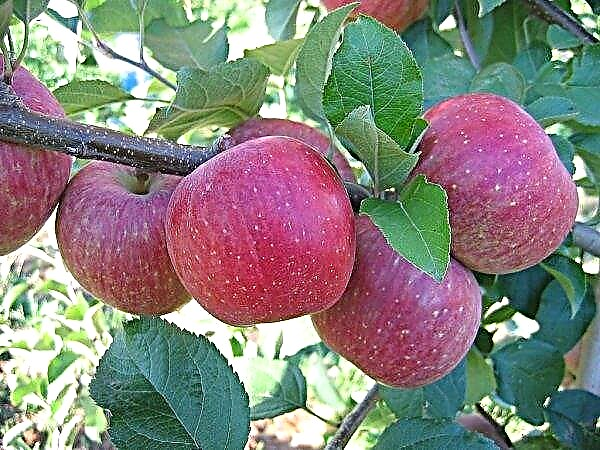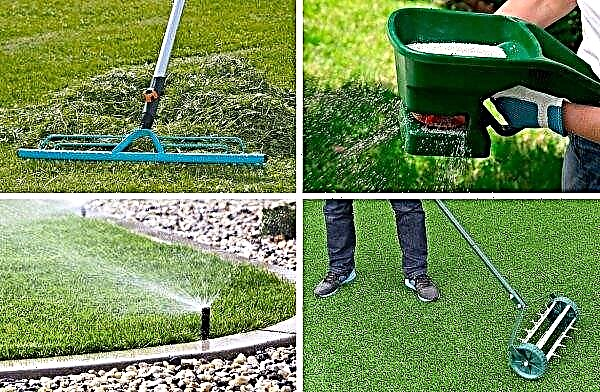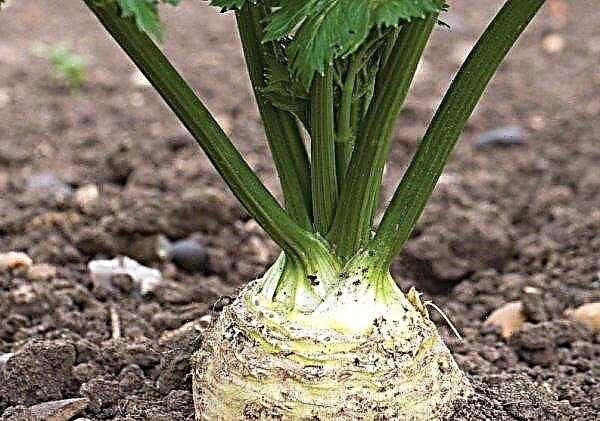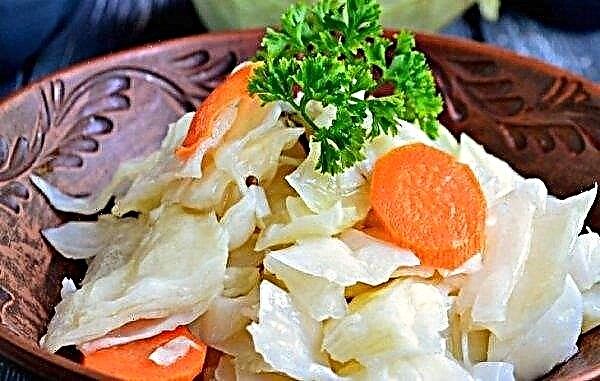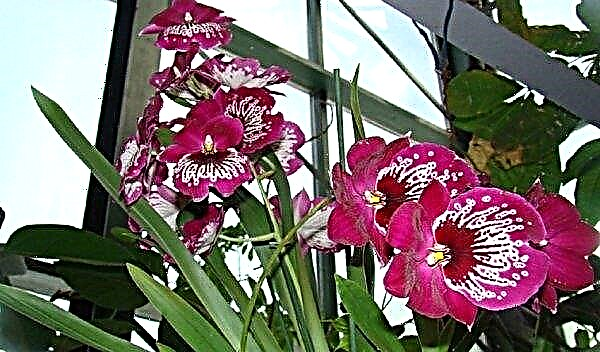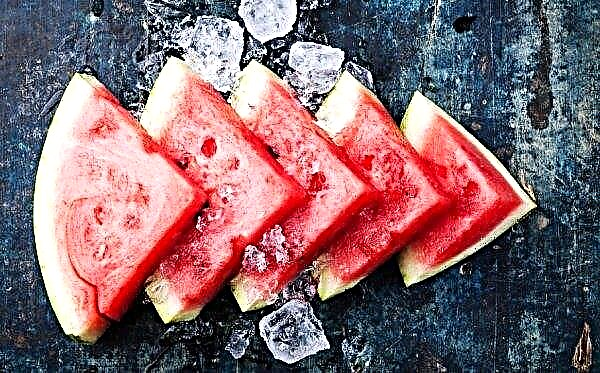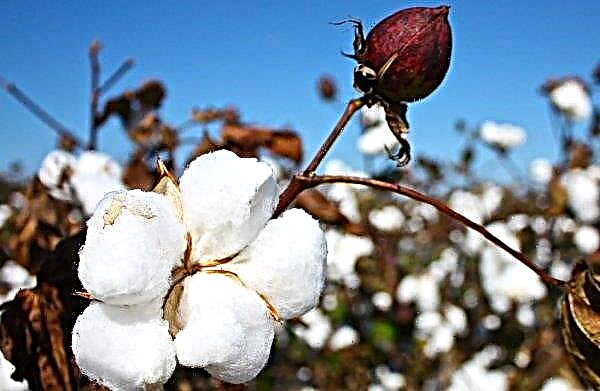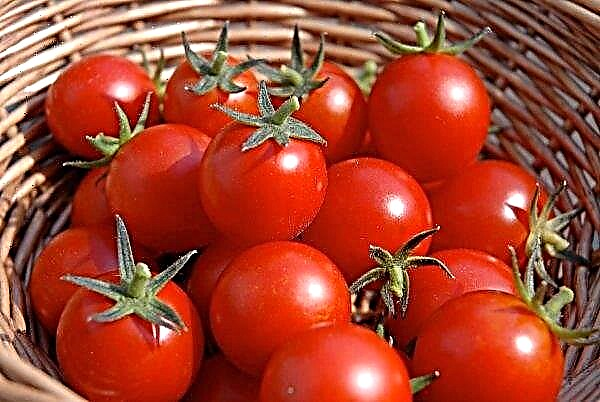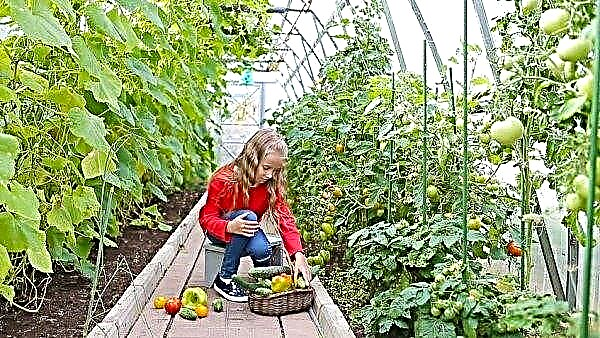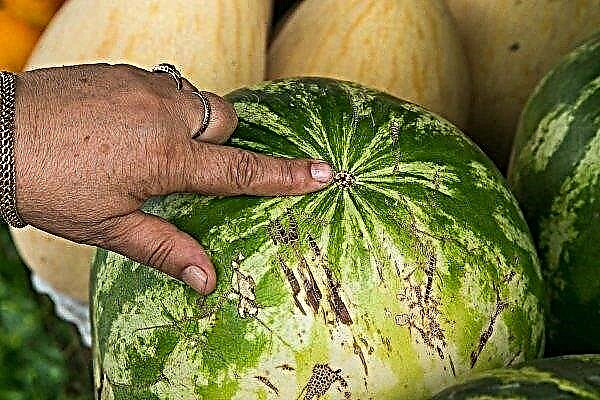In the wild, pines grow exclusively in the northern hemisphere. Their diversity is very large, in the world today there are about 200 species, a significant part of which are hybrid specimens. Bred by crossing varieties have improved properties, such as: high immunity, resistance to environmental pollution, drought resistance, so that trees can be grown in warm climatic conditions.
Of course, no one will fertilize pines in the forest, but on the plot it’s important not just the presence of conifers, but its decorativeness, so it’s important to create favorable soil in which the pine will take root well.
Ideal soil composition for pine
The soil should be as close as possible to that in which pine trees grow under natural conditions. The best option is a mixture of turf land, peat and sand in a ratio of 2: 1: 1. If clay soils predominate on the site, it is better to destroy them with the indicated components and organize a drainage layer of crushed stone, chipped brick.

It is necessary to take into account the following: a pine of any kind and variety (ordinary, Weymouth, Crimean, etc.) needs symbiosis with mushrooms. When a tree grows in harsh climates, low temperatures often lead to difficulties in the nutrition process that occurs through the roots. Organics decompose slowly in cold conditions, so there is a shortage of mineral components.
Did you know? The name “pine” in Latin is interpreted as “rock” and it is well-deserved: the tree can cling to its roots even with bare stones.
If there is a symbiosis of the mycelium of the fungus with the root system, this can be avoided. The fungus actually braids the root hairs, consuming organic matter, and in return releases mineral substances.
To achieve mycorrhiza in a private planting, it is enough to use one of several methods:
- bury hats of mature forest mushrooms in the soil under the tree (the most effective);
- purchase ready-made mycelium in the store and bring it into the ground;
- to collect a layer of soil with litter in the forest and transport it to the planting.

Pay attention to the acidity of the soil composition - it should be slightly acidic, at a level of 5-6 pH. This can be checked using a special electrical tester, consisting of a probe immersed in the ground and a panel on which the acidity value is displayed. A cheaper option is a litmus tester strip, it should react pink to slightly acidic soil.
If acidity is lowered, peat should be added to the soil, as well as coniferous needles, sawdust which will maintain the desired level for a long time. In addition, such additives will create good conditions for the life of fungi. To, on the contrary, increase acidity, you need to add soil to wood ash or lime.
Why fertilize
In nature, pine trees do not grow at the fastest pace; moreover, plants often get sick and experience pest attacks. To accelerate growth and strengthen the immunity of plants, the soil needs to be fed with nutrients. In addition, with a lack of nutrients, pine loses its decorative appearance, turns yellow and stops growing.
Did you know? Pine wood is incredibly durable. With proper care, a pine house can stand for several centuries.
The most significant trace elements necessary for the normal development of pine are such as: magnesium, potassium, phosphorus and iron. Each of them has a positive effect, but in general, these components are able to significantly increase the beauty of pine planting, give it vitality and tremendous immunity.
Video: Feeding conifers
Choice of feeding
Fertilizers are a kind of food for plants, so their selection must be approached carefully. Now on sale there is a large assortment of top dressings, both imported and domestic. To choose the best option, you should familiarize yourself with the composition that should be on each package. If information about the components contained in the tool is missing, you need to refuse the purchase.
Preferably, the composition is as saturated as possible with useful elements, there should be about 10-15 varieties. Mandatory components are potassium, phosphorus and magnesium. In addition to minerals, pine need organic matter, which also needs to be selected very carefully.
Mineral fertilizers
Mineral fertilizers can significantly increase soil fertility and, as a result, improve conditions for plant growth. Pine can be fed with root and foliar fertilizers. The latter is made by spraying the trees.
They have a more effective effect, since when processing directly on needles, plants absorb up to 80% of nutrients, while during root dressing - 20-30%. But you need to take into account that the pines reach considerable height in growth, so spraying applies only to young plants.
From the whole variety of complex mineral fertilizers, it is important to choose those that are suitable for conifers.
These include:
- Quantum - An excellent option for foliar top dressing. The product is diluted with water (20 g per 10 l) and pines are sprayed. You can replace it with the preparations "Spring-Summer" and "Autumn", which are also prepared in the form of solutions in the same proportion;
- "Florovit" - the drug has several varieties, including those that are designed for autumn processing (improve winter hardiness of the crop) and those that are used throughout the season, saturating the soil with a large amount of nutrients. The drug is available in granules and in the form of a liquid. The dosage depends on the size of the plant. For medium pine, 25-30 g per copy is enough;
- "Actiwin" - complex fertilizer, often used in landscape design. It allows you to maintain an optimal balance of nutrients in the soil throughout the spring-summer season, and also helps the plant calmly survive stressful situations (transplanting, pruning). Contains an increased amount of magnesium, iron. For feeding, the granular agent is introduced into the soil, dug up and watered abundantly.
- "Hera Coniferous" - mixed fertilizer, contributing to good growth and decorative culture, as well as the development of immunity to disease. It contains a complete balanced composition of macro- and microelements. Fertilizing is useful when planting pine - 40-50 g of the drug are added to the bottom of the planting pit. Subsequently, they are used at the beginning and end of the growing season, introducing 30–40 g under each tree;
- Green Needle - a tool that not only improves the composition of the soil, but also effectively fights against a disease such as browning of pine needles, characteristic of pine trees. The disease arises from a lack of magnesium and progresses rapidly. The use of the Green Needle helps to quickly stop its development, and with regular use it is an excellent preventive measure. It can be introduced into the soil both in a granular state and in a liquid state, after having previously dissolved the crystals in water, according to the instructions. The amount of fertilizer applied depends on the height of the pine and varies between 50–250 g per tree.

Each of these fertilizers has an individual composition, but all of them are equally useful for the growth and development of pines. You can periodically change top dressings by observing which trees respond best to them.
Organic fertilizer
Organic fertilizers are mainly of natural origin, but complex compositions can also be used.
For pine, top dressings such as:
- Vermicompost - environmentally friendly fertilizer, which includes a lot of nutrients, trace elements, soil antibiotics, growth hormones and vitamins. Fertilizing pine with biological humus will increase soil fertility, provide strong immunity, enhance growth intensity and aesthetic indicators. The approximate consumption of the drug is 2 kg per 1 m². They sprinkle soil around the pines and dig them up a little. You can purchase the product in liquid form. It is diluted with water according to the instructions and watered around the trunk.
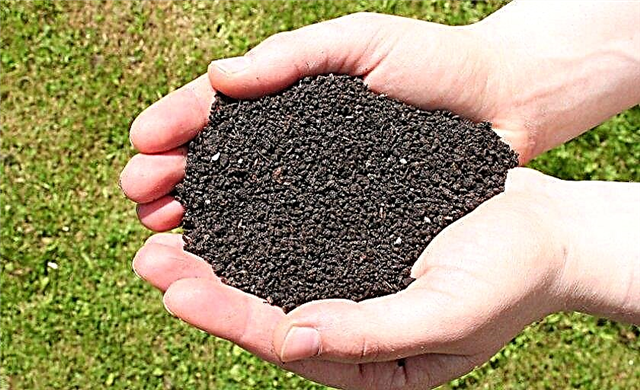
- Rotten compost - a tool obtained in the process of decaying organic substances. This is one of the most valuable types of fertilizers. Having your own land, you can cook it yourself. To do this, dig a hole in a shady place, about 1 m deep, where green remains of vegetable and garden crops, fallen leaves, slops and other garbage are poured. Compost should be reheated for about six months, after which it can be used as fertilizer: 5-6 kg of fertilizing is applied per 1 m², planting it lightly in the soil.

- Complex organic compounds. Such fertilizers obtained industrially are environmentally friendly. They have growth-promoting and fungicidal properties. A good option is the universal bio-fertilizer “Arksoil”, which provides the plant with energy for growth, improves soil quality and protects against pests, pathogens. The drug is diluted in water, observing the proportions indicated in the instructions, and watered.
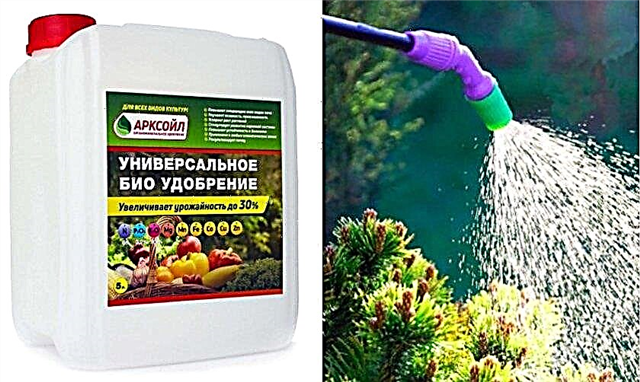
Special additives
A separate group includes products that, in addition to having a positive effect on the composition of the soil, also have specific properties. Their use will help to maintain the healthy and decorative properties of pine planting.
Important! You can not use manure as top dressing, since it contains a lot of nitrogen, which adversely affects the development of trees and can burn the roots.
These additives include the following:
- dolomite flour - a useful mineral that nourishes the soil with the most necessary elements. It contains 40% magnesium - an element that plays a large role in pine health. Also, dolomite flour helps to reduce the acidity of the soil, activates the vital activity of beneficial soil organisms and increases the effect of organic fertilizers. The mineral is sold in powder form. It is brought into the soil along with digging, 400-500 g is enough for each tree;

- Kendal - a biostimulant that promotes the development of pine protective substances that are able to perfectly counteract the penetration of pathogens. If the tree has overtaken an infectious disease, treatment with the drug will help neutralize toxins and lead to an early cure;

- Strobi - An effective drug-fungicide, used as a prophylactic or therapeutic agent for various diseases. As a prevention, it is useful to use it once a season;

- Aktara - an insecticide that prevents the attack of insect pests. He provides good help if you have to deal with "uninvited guests."
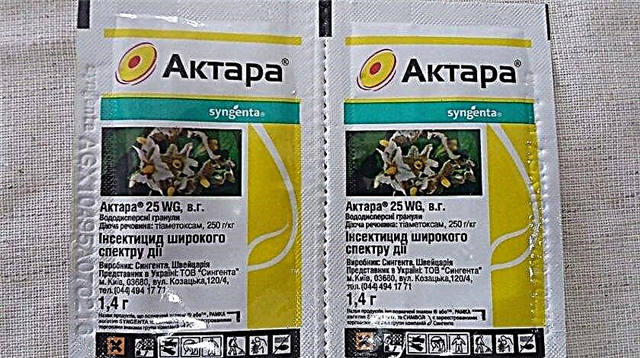
It is also worth noting the benefits of the use of growth stimulants. When planting or transplanting conifers, they often use the Kornevin remedy, which helps to improve the growth of the root system and strengthen it, helping the young tree better survive climatic stressful situations.
The drug can hardly be called fertilizer, it is rather a biostimulant that stimulates the development of roots and protects them from infectious diseases. “Kornevin” is diluted with water in a 1: 1 ratio and watered plants twice - the first time during planting, and the second after 2 weeks.
Even better is to use the “Heteroauxin” remedy, which is preferably used regularly, especially if the seedling is quite problematic. For each plant used in the processing of 5 l of a 0.002% solution.
An alternative would be the Radifarm mineral complex, which is treated with young pines, 2-3 weeks after planting. The drug has a rather voluminous composition of components useful for pine growth and is considered one of the best designed to stimulate the development of the root system.
When pines require top dressing
Unlike deciduous trees, conifers do not have large leaf blades, and therefore require much less energy. Despite this, top dressing should be regular throughout the season, which lasts from April to August.
Important! You can not make supplements later than August, as this will provoke the growth of young shoots that do not have time to mature before the onset of cold weather and freeze.
With normal growth
The first top dressing is carried out in early spring, after the snow has melted. At this time, mineral mixtures and organic matter are introduced. If you feed the soil only with compost, which has a delayed effect, this will be enough, but only if the pines have a healthy appearance. If you notice that after the winter the needles of the plants are noticeably yellow, you need to add mineral fertilizers containing an increased percentage of magnesium. They treat the soil 4 times with an interval of 10 days.
The second time the main dressing is carried out in late June - early July. During this period, it is advisable to fertilize the soil with vermicompost and complex mineral composition. Throughout the entire growing season, it is recommended to carry out foliar feeding of young animals by spraying. The recommended interval is 3-4 weeks.
After landing
Planting pine has its own requirements. First of all, it is not recommended to dig young seedlings in the forest and transplant them to your site - such material rarely takes root and often gets sick. It is better to get young trees, 3-4 years old in the nursery. It is advisable to add 30–40 g of mineral and organic fertilizers to the planting pit, and treat the planting itself with biostimulants of growth.
The first time after spring planting of pine require increased attention. Fertilize them during this period should be regularly. 2-3 weeks after the pine has been planted in open ground, you should repeat the soil treatment with a biostimulator and spray with foliar mineral fertilizing. This is followed by top dressing with mineral and organic compounds in early summer.
After trimming
Formative pruning of pines is carried out in mid-May - this is the most favorable period. At this time, there is a significant increase in shoots, the shortening of which positively affects the formation of a dense, compact crown. During the procedure, the plant experiences stress. The loss of needles, numerous wounds, the need to continue growing - these factors make the plant weaker, reduce immunity.
To restore vitality, trees need to be fed. During this period, complex mineral fertilizers are applied to the soil. It is advisable to choose those whose composition is dominated by magnesium, iron and zinc, such as, for example, Actiwin or its analogue Everris. Fertilizers are applied to the soil at the rate of 80-100 g per copy.
Tips & Tricks
In conclusion, get acquainted with some simple rules that will help to grow healthy evergreens in your area. Namely:
- Mulch the soil around the pines with pine needles. The advantage of this material is that it is stored for a long time and is not compacted, while retaining moisture well and allowing air to pass through.
- It is better to undernourish the pine than to overfeed, otherwise the plants will not tolerate winter well.
- Periodically loosen the soil - good aeration of the soil contributes to the favorable development of fungi that nourish the root system.
- Before applying spring fertilizing, you need to remove all dry, diseased and damaged shoots from the plants so that decorativeness is restored during the growing season.
- Carefully select and control the composition of purchased complex fertilizers, make sure that the amount of nitrogen in them does not exceed 12-14%.

Proper care of pines in the house area is not a particular problem. Watering is carried out in extremely rare cases, pruning - as a rule, once a year, not counting the periodic removal of damaged and diseased shoots. But in order for the trees to have high decorative qualities and not to hurt, they must be fertilized.








